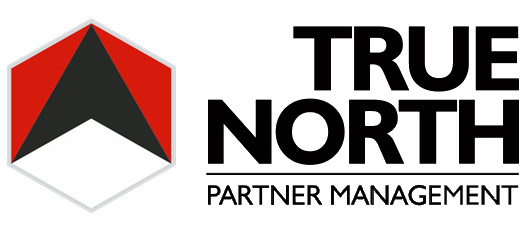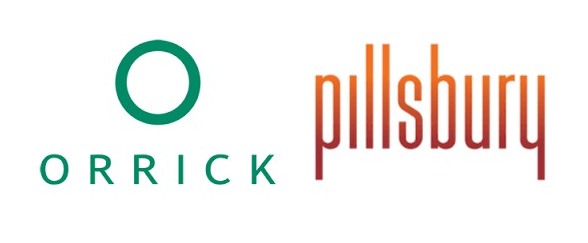The following post originally appeared on Forbes | Nov 1st, 2013
To the lay person, BigLaw is driven by greed. Huge hourly rates, impossibly long hours, padded bills, and the list goes on. And while this is the case with some firms, sheer greed is rarely the central motivator in pushing profits. The nature of the post-financialized legal market forces firms to continuously seek new sources of capital, for if they fail to do so, then, well, they fail… A complete explanation of this is beyond this article’s scope, but suffice it to say that partner mobility and the need for ever-more powerful reputational signals has left many firms treading water, continuously replenishing capital that has vacated the firm.
At first glance, many would point to new client acquisition as the most logical source, and they would be wrong. A logistically complex and economically inefficient process, new client acquisition through direct marketing efforts is less than ideal. The quickest and easiest way, believe it or not, is through lateral acquisition. And when singular lateral acquisitions aren’t enough, firms just might step it up a notch and acquire offices, or go all in with a merger.
Growth can be a great thing, when it serves a logical and strategic purpose. But when it is pursued to keep one’s head above water, issues can arise. Though Orrick and Pillsbury have confirmed talks of a merger, the original news was leaked, coercing a premature confession. Breaking news is always savory to journalists and the population at large. It is also usually incomplete. The state of this merger is no exception. Being the skeptic that I am, I spoke with Paula Alvary – a founding principal at Hoffman Alvary, merger consultant for Pillsbury, and authorized public voice for both firms. Because things are quite preliminary, she was limited in the amount of information she could relay. And while the points below do not constitute a comprehensive merger checklist, she was able to shed light on the more consequential early stage criteria.
A Shared and Logical Strategy
On the surface, the merger didn’t appear to be terribly strategic. Both firms have similar geographic and sector footprints, and when viewed through the lens of globalization – the default in this market – Orrick and Pillsbury looked like another uninformed grouping. Wouldn’t a globally-directed firm seek complimentary, rather than supplementary, merger partners that have offices in profitable foreign markets? Take Fulbright and Norton Rose as an example. Well, the answer is yes, and no. When I asked Paula “What is the goal that these firms are looking to achieve? It’s being touted in the media as a ‘top ten national firm,’ is that what they are shooting for?” She had this to say:
 “If you took each firm’s independent strategy, their sector focuses, whether it is financial services, or IP or energy, and you look at their footprint and their current investments in places like San Francisco, and Washington and NY, when you add them together, from a point of view of [either firm] and you say well, we would like to build our practices in these locations”… “Each firm fits the bill for growth and provides it in one transaction, that would take much, much longer to do and be harder to do with a cohesive group already vetted for quality and fit all of those parts.”
“If you took each firm’s independent strategy, their sector focuses, whether it is financial services, or IP or energy, and you look at their footprint and their current investments in places like San Francisco, and Washington and NY, when you add them together, from a point of view of [either firm] and you say well, we would like to build our practices in these locations”… “Each firm fits the bill for growth and provides it in one transaction, that would take much, much longer to do and be harder to do with a cohesive group already vetted for quality and fit all of those parts.”
After a bit of clarification, I found that the strategy behind this merger lies in further strengthening a domestic platform, from which to launch, and more effectively support, new and existing international offices. This, to me, seems logical and a (somewhat) conservative approach – attractive commodities missing in some of this year’s other mergers.
I am not surprised by such an approach from these two firms; both are seasoned merger hunters, and aren’t afraid to go the distance but still pull out if all the planets don’t align. This strategy is not without its issues, however. Numerous real estate leases will need to be renegotiated. In addition, they have the challenge of overlapping staff and attorneys. Where simple acquisitions are concerned, sizable redundancies in human capital are less likely because (i) the reduced size results in less people (duh!), and (ii) the acquired firm is generally fishing in a different pond of clients, and where different but complimentary clients are concerned, with all things being equal, the new firm will needapproximately the same amount of man power. The same might be said for large mergers: despite having much more human capital to manage, the complementary nature of the practices should warrant keeping (at least) most of their man power. But, Orrick and Pillsbury have “Many, many shared clients,” said Paula. This can be a double edged sword, making things a bit harder to predict.
Rosters that boast the same clients can, indeed, result in higher people redundancies, especially if clients leave as a result of the merger. There is a silver lining for clients, however, as a consolidation of vendors and an obvious understanding of their business(es) by each respective firm can provide significant functional and psychological benefits. Any merger will see a modicum of human capital shakeout, and if these firms have (very) good client relationships and strong cultures, the organic loss just may cover any necessary reductions. This is one of those merger elements that are quite difficult, if not impossible to predict, however, and we’ll need to keep an eye on this.
Compensation
Another major challenge lies in the details of each firm’s compensation models. A successful merger demands that the details of each be similar for a number of reasons. To start with, someone will make more money, while someone makes less. Though this can’t be avoided, if the disparity is too large, a sizable portion of the population may become disenfranchised and leave – this much should be apparent. However, by digging deeper into the compensation models you’ll find a very clear distribution of power within the firm – an enormous factor in creating the firm’s culture, and more specifically, the individualistic or collectivistic nature of the firm. If this group-wide psychological criterion is not in (at least) some level of alignment between the two firms, they will have a very rough go in the long run.
While Paula said “It’s too early to tell,” regarding the homogeneity of the models, she did go on to say “When you look at the numbers and the parts, they appear to dovetail and fit together very plausibly, very nicely.” This doesn’t surprise me, as it is, indeed, very early in the process and finer details like this won’t be fully vetted until after a letter is signed. One of the processes her firm uses is an analysis of “dozens and dozens” of hypothetical scenarios to see how the firms would compensate each. This certainly goes a level deeper than simply evaluating the written model of each firm, further drawing out the particulars and illuminating any blind spots. In short, while the compatibility of the compensation models has not been given a “clean bill of health,” yet, the parties in charge seem to be going to great lengths to ensure that this criterion is met.
Taking my own cursory look at the numbers leaves me conflicted. The revenue per lawyer metrics of Pillsbury and Orrick are $920,000 and $885,000, respectively. These (important) numbers reflect, on the surface, practices of similar efficiencies, and within reason, similar workloads. There is, however, a sizable variance in profits per partner, with Pillsbury and Orrick being $1,100,000 and $1,630,000, respectively. Such a sizable disparity may result in some unhappy campers as the equity partnerships are combined. If the new firm’s compensation model – assuming the merger goes through – is more “individualistic” in nature, the disparities may not become a major concern once combined production is under way. Likewise, major disparities may be remedied by individual contracts or other variances in the firm wide compensation model. Just like Paula, however, I can’t make a fully informed decision without delving deeper.
Culture
Culture is a massive obstacle in any merger – roommates must get along, if they are to live under the same roof. From a chemistry standpoint, these firms are no strangers to one another. Because of the shared clients and their very similar geographic and sector footprints, both camps have been able to evaluate each other from a somewhat unique and telling position – that of an adversary. Many of these partners have competed head to head for clients; many of these partners have sat across the table from one another; many have evaluated, in a very critical sense, the quality of opposing counsel’s work, and the ethics with which they’ve practiced. This has allowed each firm to have already crossed what Paula says is “The first threshold,” which is characterized by questions such as “Would I be proud of these people [as] my partners?” and “Would my clients say thank you that these people are part of the new team?” Being able to sincerely and convincingly answer “yes” to these questions conveys a deep level of respect – a very consequential piece of the culture puzzle.
Having worked in a consulting fashion with attorneys from both firms, in my opinion, their “personalities” are similar, which is a very broad assessment, admittedly so, but still my impression, nevertheless. This is not surprising, as they are both CA-based firms; their client bases, geographies and practice matrices are similar, and the caliber of their attorneys are similar, among other things. But, one important cultural criterion that does harbor a disparity is the firms’ leverage ratios. While Orrick’s head count is much higher, the size of their equity and non-equity partnership is much more closely aligned with Pillsbury’s, reflecting a large disparity in associate leverage ratios. While this isn’t necessarily a bad thing as far as profits are concerned, it may be a very strong cultural consideration. Leverage ratios reflect, directly, on a firm’s attitudes toward fundamental cultural criteria such as appropriate human activity, performance orientation, human relationships and basic characteristics of relationship roles – all influential ingredients in a firm’s decision algorithms. Major discrepancies at such a fundamental level may cause issues and warrant further exploration – something easier said than done.
Culture is comprised of tangible criteria such as office addresses, particular forms of dress, rituals, etc., and intangible (psychological) criteria, such as beliefs, values, attitudes, etc. The various components render culture difficult to assess, requiring extensive and formalized systems to do so. When asked how these firms are attacking this, Paula said “Shared cultures and share professional values are enormously important, but they are very much a professional culture[s]. It doesn’t matter”… “You can have people who are liberals and conservatives, or different religions and so forth. That’s not what is important, what matters is why do they come to work in the morning? What do they want to achieve? How do they want to achieve themselves?” Much more than putting people in a room to see if they get along, both firms are evaluating answers to questions like: why does one come to work in the morning? What do the partners what to achieve? What is good enough work? How do you treat partners? How do you treat staff? What are your training philosophies? These questions and more are a part of the in depth exploration that both firms are considering in hopes to develop a sturdy, homogeneous and congruous culture.
In summary, the Orrick/Pillsbury merger is still in its early stages. Determining whether these firms can happily marry requires significantly more exploration and work. Importantly, based on each firm’s histories, financial performances and geographic/practice footprints, it doesn’t appear as though this merger effort is reactionary, allowing a more careful, in depth process, which, apparently, they are headlong into. And at the moment, while the firms seem to have a few rough spots to smooth over, they do appear to be walking down a yellow brick road.



